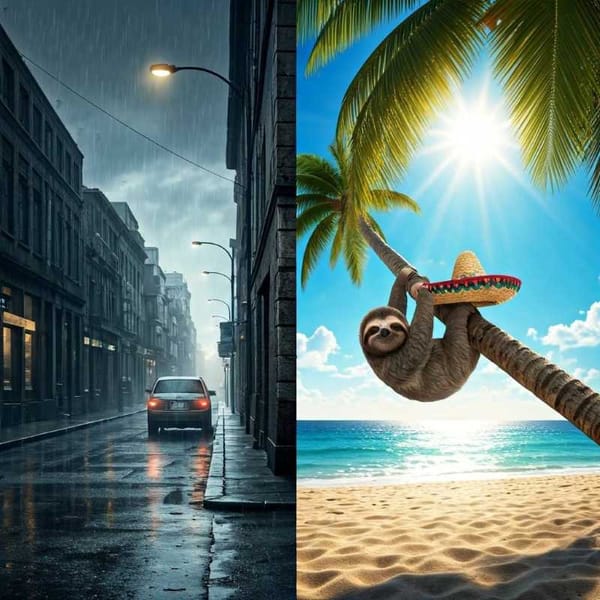Mural The Arts and Sciences, by Rodolfo Morales located at Prepa 5
In 1962 Rodolfo Morales painted a fresco on the walls of the Gabino Barreda Auditorium lobby, as attested by the artist's signature in the lower right section of the piece, which is known as Las artes y las ciencias (The Arts and the Sciences).

The painter Rodolfo Morales was part of the first generation of teachers at the José Vasconcelos National Preparatory School 5 when it was inaugurated in the early 1950s. He spent 32 years in its classrooms as a drawing teacher and educated thousands of students interested in the plastic arts; however, his legacy for the school goes beyond the classroom.
In 1962 he painted a fresco on the walls of the Gabino Barreda Auditorium lobby with the support of Bartolo S. Ortega and Paciano S. Rodriguez, as attested by the artist's signature in the lower right section of the piece, which is known as Las artes y las ciencias (The Arts and the Sciences).
For Renato Gonzalez Mello, a researcher at the Institute of Aesthetic Research, the piece surprises those who look at it, because "like the painter and his work as a whole, I think it should be a better-known work. The motifs and forms of plastic articulation that two decades later would make Rodolfo Morales famous already appear".
"It was at the end of the 70s and the beginning of the 80s, when he received the support of Rufino Tamayo and retired as a drawing professor here at Prepa 5, that Rodolfo Morales' career took off in a very important way, precisely with this reformulation in a very relevant feminine key of the imaginary of the small communities, In this case of Oaxaca, which will lead him at the end of his life to exercise a certain patronage, to intervene in the restoration of the parish of Ocotlán, with colors that are those of his work and that also have to do with the traditions of the people and in this, he adds to the social exercise," he explained.
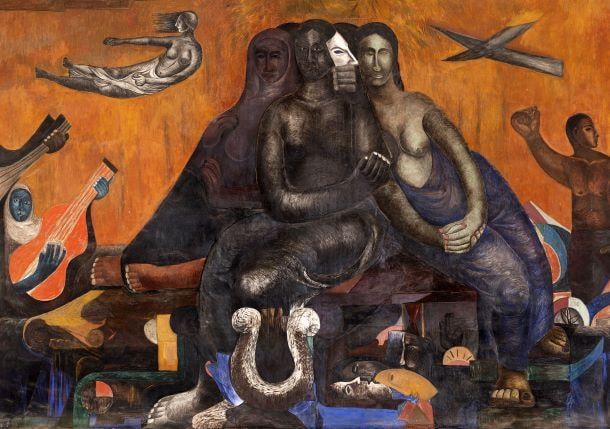
The Arts and Sciences mural by Rodolfo Morales
In the fresco it is possible to appreciate at the ends several male figures developing technology and doing research thanks to the tools in their hands -microscopes, compasses, rulers, etc.-. In the center is a group of women and men in artistic and social coexistence.
The composition, said Renato González, has "a certain air of familiarity, but Morales paints a fundamentally feminine universe in which he seeks to symbolize a community and it is an ambivalent community, clearly a peasant community. At the same time,men are peeringg into a microscope, but there is not this hegemonic and somewhat abusive predominance of a hypertrophied notion of virility that sometimes characterizes the mural work in Mexico. It is a universe that speaks of civic space and yet is configured in a completely original way."
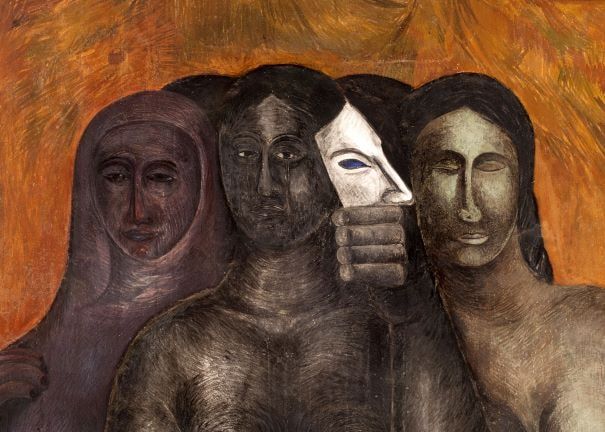
The story of the work "is different from others in mural painting, this one is usually that of some official who says 'well, we are going to improve the environment. Let's call it a famous painter'. I have to confess that we do not have enough news, that we have not done the necessary research on the commission of this mural work that shows a painter reaching a moment of enormous maturity, who works together with other people -as can be seen in the signature-, as it used to be in this type of enterprises.
He owns a quite refined fresco painting technique and paints; however, different from other Mexican muralists and artists.
"I think this is very outstanding and that very probably, if analyzed, if the archives are reviewed-I insist that this is something pending-it is very possible that some history between the drawing teacher, Rodolfo Morales, his fellow teachers, and his students in this school can be found. The truth is that finding this work, which fortunately is very well preserved, is a moment of great pleasure, "he added.
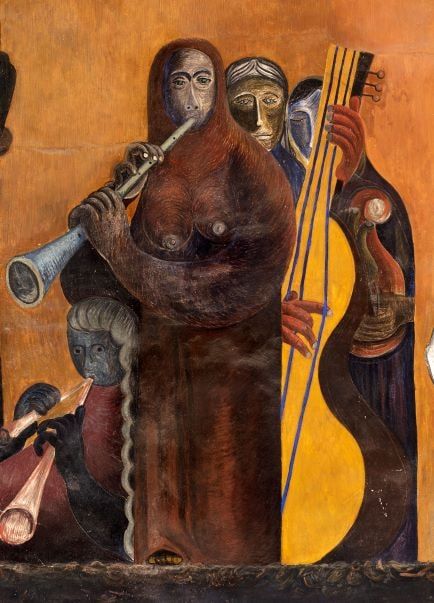
Another Mexico
It is a mural that we, as spectators, must consume slowly to properly appreciate its intentions, since the figures it presents do not follow the line of those captured by previous generations of muralists in our country. Even, he pointed out, one could speak of a new kind of civility:
"It is a female group in the center surrounded by a space that I dare to define as civic, with the rituals and in the way we are used to imagining the patriotic civility of the Mexican State.
It is another civility, that of the smaller communities. It has, in turn, a superior space in which allegorical -not to say angelic- figures appear; and it is not that there is a frank invasion of the supernatural, but the recognition of a symbolic universe that is not completely in the layout, it is not entirely encrypted in the material reality of the urban space.
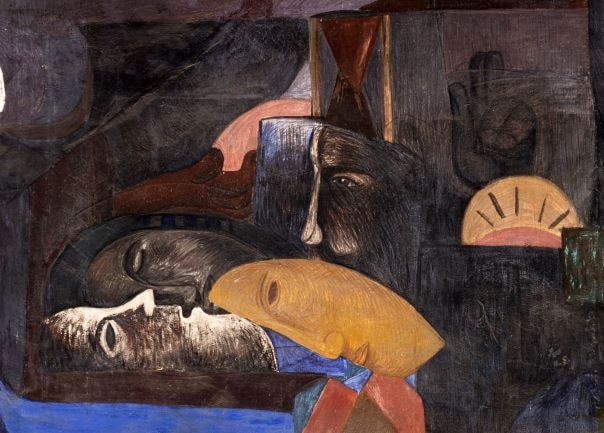
There are, of course, a series of allusions to different knowledge, which is de rigueur in a school. However, it is necessary to do a more detailed work of deciphering, we are just beginning to go through some of these works, but it is clear that Rodolfo Morales moves away from the usual symbolic codes of Mexican nationalism, which has all these themes extraordinarily well encrypted. Here he speaks to us of a conception of social space that is simply different from what we believe has to do with the strength of community life in Oaxaca, without a doubt, and an enormous cultural richness that has managed to be maintained, even strengthened.
It is a work that has moments of enormous ferocity, Morales is a very kind painter, but he is not someone who is part of the national canon. There is a renewal that looks towards this rural universe, but giving it a legitimately parochial character," he said.
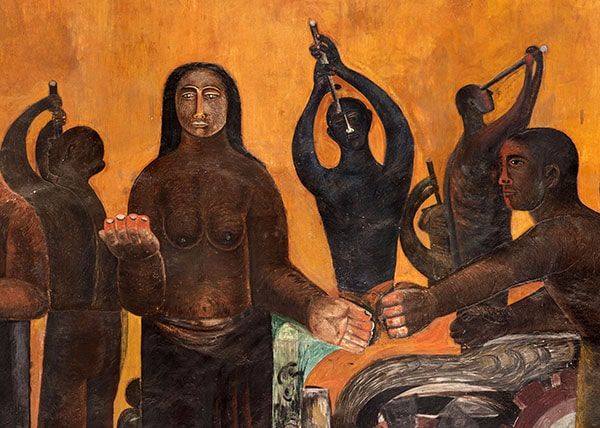
Necessary revaluation
Unlike the murals in University City, the one by Rodolfo Morales in the "Coapa high school" has been little studied and analyzed. This is partly due, argued Renato Gonzalez, to the fact that when it was painted its author was not yet a recognized artist. In addition, like other Oaxacan artists, his work has been limited to the regional level without being fully integrated into the national canon.
"I want to imagine that behind this work there is some history of teaching and learning, which would be fantastic to recover if that were the case," mentioned the researcher. "This mural is painted when Rodolfo Morales is starting his career as a drawing teacher and it is a work of art done and right. When I saw photos of the mural I could not believe it because, in addition, I would say that it is a very outstanding work within the painter's production. The image is difficult to obtain, it doesn't appear very often reproduced in books and when one sees it in its entirety or stands in front of the mural, gee, there's no way to turn it around.
It is unmistakably Rodolfo Morales' symbolic, stylistic and resourceful universe; it is a fully formed aesthetic-artistic pictorial universe. That is to say: he is going to evolve, yes, but he has no deficiencies. He is not a young artist in formation, he already has a clear idea of where he is going," commented Gonzalez and ventured:
"The image of artists like Rodolfo Morales is always a little encapsulated in this universe of regional significance. We believe there is an obligation to have a national narrative, what was important in Mexico? That narrative tends to be quintessentially centralist, with very little that departs from that canon and within that, the type of representation we see here, in the first place, is painting, painting, fresco painting and it is also a joyful representation, it does not coincide with a narrative of Mexican modernity that always moves forward and upward with fanfare. Rodolfo Morales does not add to that heroic narrative, it is not a painting that says I am going to the war of the 30 years, or something like 'I am the future of art, I am the future of Mexico'.
It is simply a narrative, which Rodolfo Morales not only does not join but seems to be deliberately outside, fundamentally on the sidelines presenting an alternative rather than a challenge and that is why it has not had a major place in the historiography. This mural and the collages of this artist will be things from which it will be impossible to distract attention in the future".




